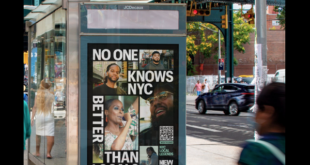[ad_1]
NEW YORK – The U.S. hotel industry is projected to see overall performance growth of 2.0% for 2019 and 1.9% for 2020, according to STR and Tourism Economics’ latest forecast just released at the 41st Annual NYU International Hospitality Industry Investment Conference. The growth figure for 2019 is lower than the 2.3% increase projected in February of this year.
“The first quarter of the year came in worse than forecasted on the ADR side, and while the indicators point to better performance the remainder of this year, we lowered our RevPAR projection 30 basis points mostly as a result of Q1 performance,” said Amanda Hite, STR’s president and CEO. “The good news is that we continue to set monthly demand records, and occupancy has been a bit better than expected. Economic momentum is slowing, but consumer confidence and a low unemployment rate should aid more meaningful performance growth as we get into the busy summer months. Forward-looking U.S. air travel bookings remain steady and vacation intentions are on the upswing compared to the two previous years.
“Moving forward, we’re monitoring the development pipeline – even though supply growth has been gradual on a national level, we’ve already seen the impact of new inventory in major markets and the select-service segments, and construction activity has been up for seven straight months overall. Additionally, labor costs have outgrown revenue for two consecutive years, which is placing more pressure on already shrinking profit margins.”
For the last four years, STR’s forecast has ranked as the most accurate among top industry prognosticators.
| Outlook | ||
| 2019 Forecast | 2020 Forecast | |
| Supply | +1.9% | +1.9% |
| Demand | +2.0% | +1.7% |
| Occupancy | 0.1% | -0.2% |
| ADR | +1.9% | +2.2% |
| RevPAR | +2.0% | +1.9% |
Source: STR/Tourism Economics
2019
For 2019 as a whole, the U.S. hotel industry is projected to report a 0.1% increase in occupancy to 66.2%, a 1.9% rise in average daily rate (ADR) to US$132.32 and a 2.0% lift in revenue per available room (RevPAR) to US$87.65.
RevPAR increased 2.9% in both 2018 and 2017- that growth level was the lowest RevPAR percentage change for the country since 2009.
A majority of the U.S. Top 25 Markets are projected to register RevPAR growth in the range of 1% to 3%. Three markets are expected to fall within a growth range of 3% to 7%: Atlanta, San Francisco/San Mateo and Tampa/St. Petersburg. On the other side of the forecast, five markets are likely to see a year-over-year RevPAR comparison between -2% and 1%: Houston, Miami/Hialeah, Minneapolis/St. Paul, Philadelphia and Washington, D.C.
Among chain scales, the Economy segment is likely to report the largest increase in occupancy (+0.5%). Luxury chains are expected to post the highest growth rate in ADR (+2.3%). Independents are expected to see the highest jump in RevPAR (+2.2%). While all segments should report RevPAR increases for 2019, the lowest rate of RevPAR growth is projected in the Midscale segment (+1.2%).
2020
The forecast for 2020 remains mostly the same. STR and Tourism Economics project a 0.2% decrease in occupancy to 66.1%, a 2.2% lift in ADR to US$135.17 and a 1.9% rise in RevPAR to US$89.36. Occupancy in the U.S. has not declined year over year since 2009.
All but four major markets are projected for RevPAR increases between 1% and 3%. Boston, Miami/Hialeah, Norfolk/Virginia Beach and San Francisco/San Mateo are expected to see RevPAR increases between 3% and 7%.
The highest overall rate of RevPAR growth (+2.2%) is expected in the Luxury segment, while the lowest (+1.4%) is projected among Midscale chains.
[ad_2]You can read more of the news on source
 Travelsmart
Travelsmart



